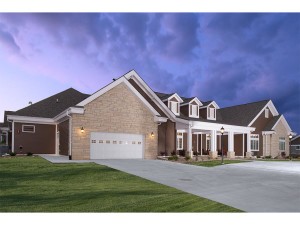 By: Robert Smith, President, Lockard
By: Robert Smith, President, Lockard
The care for sufferers of Alzheimer’s and other forms of dementia has vastly improved in recent years. Whereas institutions were once designed mostly to severely restrict Alzheimer’s patient’s movement and their ability to wander off, many facilities today are being built with the goal of helping them maintain a high quality of life.
These new facilities are known as Memory Care Units. These facilities are designed to meet the specific needs of the estimated 5.3 million people with Alzheimer’s or Chronic Confusion and Dementing Illness (CCDI) in the U.S. Some of the advances in the design of the memory care facilities include:
- Open floor plans that facilitate easy navigation; no more long corridors with dead ends that may confuse patients
- Limited office space so nurses can easily be found in common areas
- Interior courtyards to help stimulate residents and provide outdoor access through unlocked doors
- Apartments clustered together to provide a “neighborhood” feeling
- Increased natural lighting
- Hallways painted in a variety of colors to assist residents in locating the way back to their rooms
- Multiple gathering rooms such as reading rooms, spas, game rooms, and dining facilities
- Inviting environment with concierge like services for residents, guests, and family
The Western Home Communities Memory Care Cottages in Pinnacle Prairie, located in Cedar Falls, Iowa, has been built with many of these state-of-the-art features. Totaling 12,000 square feet, the Western Home Communities Memory Care Cottages feature 16 bedrooms with private baths. Each Cottage has an open kitchen, great room with fireplace, dining room, den/library, spa room with hairstyling station, courtyard, and front porch. These cottages are specifically licensed to provide advanced skilled nursing care for people with CCDI.
Along with cutting edge facility design and advancements comes advancements in the delivery model. A new “person-centered care” initiative is being developed that will enhance each resident and resident’s caregiver’s experience. Instead of all residents within an institution receiving essentially the same care, a facility provides individualized treatment to each patient.
Advancements in technology and adaptation of existing non-traditional resources are leading the charge on person-centered care. Remote sensor technology is quickly becoming a staple of the latest and next generation memory care facilities. This technology is able to provide real-time data on the condition of residents to care providers and loved ones. It goes even further by “learning” the daily habits and patterns of residents. The technology can then communicate any deviation from a routine, which many indicate a resident is having health issues.
Many facilities are adopting the Montessori Method of care when planning and delivering patient activities. Similar to its use in education to allow students to focus on their individual gifts and interests, Montessori care involves having several types of activities available for memory care residents. This type of therapy requires a facility to have the necessary space, both in size and configuration.
Another type of Alzheimer’s therapy that can be accomplished through the layout of a memory care facility is reminiscence therapy. This is based on the idea that many Alzheimer’s patients maintain their long-term memories. While they may forget recent events, they often have vivid recollections of childhood and young adulthood.
A facility in England, Grove Care in Winterbourne, brings this concept to life through its “Memory Lane” neighborhood. This section of the facility is designed to resemble a 1950s neighborhood, complete with a pub, post office and grocers. Original 1950s memorabilia provide added realism. Grove Care says the purpose of Memory Lane is “to provide an attractive and interesting destination for the people we care for as well as reminiscence therapy – to improve psychological well-being in dementia sufferers.”
This new age of memory care facilities expand benefits beyond just the patient. Caregivers also benefit from the open and welcoming environment. The comfortable setting and open floor plans helps encourage longer stays and aligns with the “the person-centered care” experience.
As treatments for Alzheimer’s continues to advance, so too will the need for innovative design and construction of care facilities that can accommodate modern treatments for the disease.
